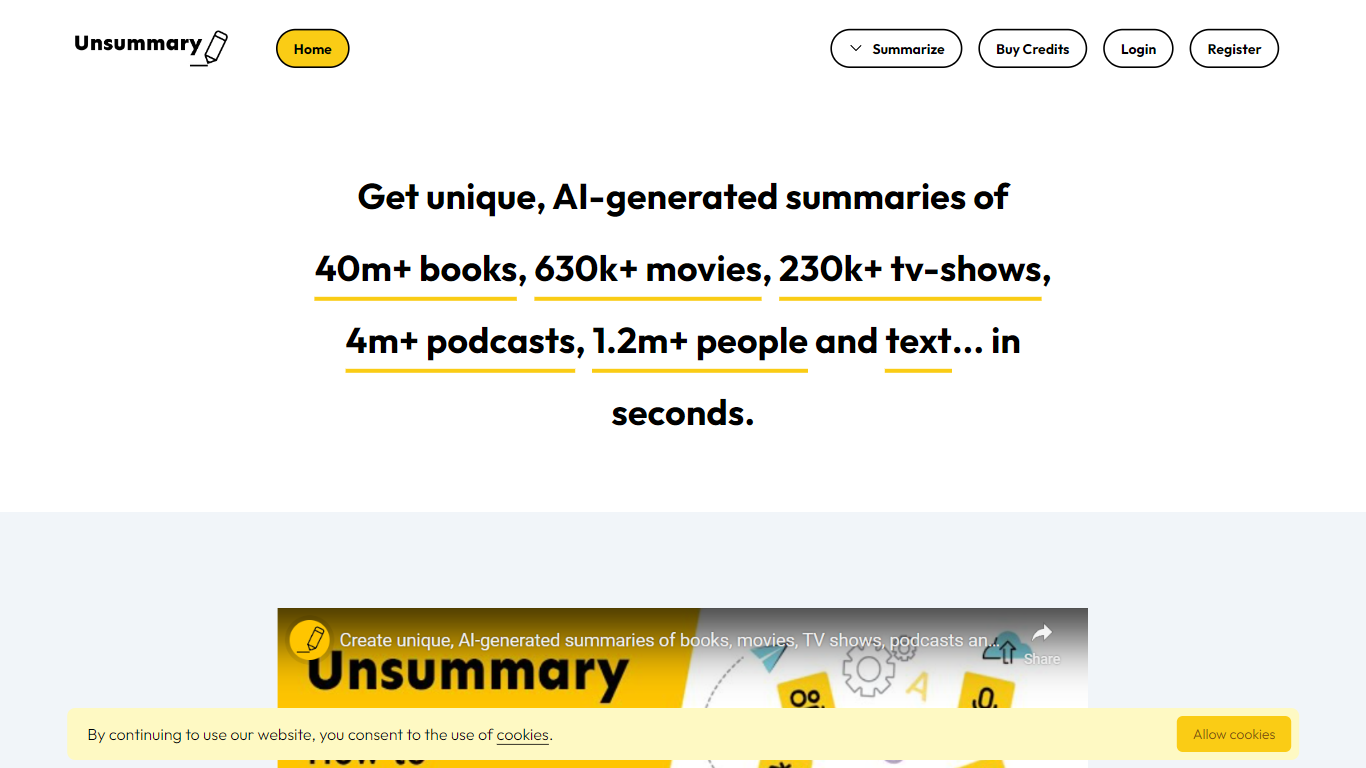Unsummary vs Typeset
In the clash of Unsummary vs Typeset, which AI Summarizer tool emerges victorious? We assess reviews, pricing, alternatives, features, upvotes, and more.
When we put Unsummary and Typeset head to head, which one emerges as the victor?
Let's take a closer look at Unsummary and Typeset, both of which are AI-driven summarizer tools, and see what sets them apart. Typeset stands out as the clear frontrunner in terms of upvotes. The upvote count for Typeset is 24, and for Unsummary it's 7.
You don't agree with the result? Cast your vote to help us decide!
Unsummary

What is Unsummary?
Unsummary is an innovative platform designed to provide you with AI-generated summaries of an extensive collection of books, movies, TV shows, podcasts, and notable personalities. With a database featuring over 40 million books, 630,000+ movies, 230,000+ TV shows, 4 million podcasts, and profiles of 1.2 million people, Unsummary delivers concise, insightful, and instant summaries in just seconds. This next-generation tool harnesses the power of AI to help users quickly grasp the essence of various texts and multimedia content, making it an invaluable resource for those looking to save time while still gaining knowledge and understanding of diverse topics and stories.
Unsummary's user-friendly interface allows for seamless browsing through its vast collection, catering to the needs of students, professionals, and entertainment seekers alike. Whether you're looking for a quick synopsis of a best-selling novel or a brief overview of the latest podcast episode, Unsummary ensures that the key information is at your fingertips. Moreover, by employing cookies to enhance the user experience, Unsummary ensures a personalized and optimized browsing session, each and every time you visit the site.
Typeset

What is Typeset?
Your platform to explore and explain papers. Search for 270M+ papers, understand them in simple language, and find connected papers, authors, topics.
Unsummary Upvotes
Typeset Upvotes
Unsummary Top Features
AI-Powered Summaries: Instantly receive concise summaries of books movies TV shows podcasts and personalities.
Extensive Database: Access summaries from a vast collection composed of 40m+ books 630k+ movies 230k+ TV shows 4m+ podcasts and 1.2m+ people.
Quick Understanding: Rapidly gain knowledge and insight into diverse subjects without spending hours in reading or viewing.
User-Friendly Interface: Navigate through the platform with ease to find the summaries you need.
Personalization: Enjoy a tailored browsing experience through the use of cookies.
Typeset Top Features
No top features listedUnsummary Category
- Summarizer
Typeset Category
- Summarizer
Unsummary Pricing Type
- Freemium
Typeset Pricing Type
- Free
